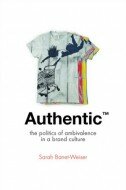I recently had a conversation with an acquaintance about perceptions of women and power. In this instance, the man in question contended women call the shots in relationships because they have more ready access to men, where men must seek more to appeal to women. While it wasn’t explicitly stated, in his mind, female empowerment was predicated on a woman’s ability to choose — in this case, bedmates.
Such is the landscape wrought in a world in which women’s liberation is not measured by men or the mainstream in material gains for women, but repackaged traditional notions. In Sells like Teen Spirit: Music, Youth Culture, and Social Crisis, Ryan Moore related a congruent opinion on youth culture, in which young people’s adoption of stylized alternative subcultures have bygone (and extremely conservative) ideologies of masculinity, femininity and relationships. Today’s visions imply a new approach, yet aren’t much different than the old one, when it comes to expectations of women’s agency, of sexual accessibility to men, and of a new moral framework that posits freedom is how a woman is seen by the world around her.
Various social movement phenomena, from Slutwalk to FEMEN, are merely a prism of what women everyday are presented through popular culture: that women’s bodies, men’s desire and female acquiescence are the ways a woman is heard in the marketplace of ideas. Adding to these inferences, consumer culture in the mix of social media and online engagement has made individual entrepreneurship a replacement for collective action.
 It is undeniable how marketing has become the bellwether for politics, technology, culture and society. Yet it is this form of self-branding, as Sarah Banet-Weiser writes in Authentic™: The Politics of Ambivalence in a Brand Culture (New York University Press, 2012), that is recasting identity construction through neoliberal ideas of liberty, productivity and creativity. It goes further than merely old sexist objectification of women’s bodies, but educating girls from a very early age to use their bodies and personalities for attention and even fame.
It is undeniable how marketing has become the bellwether for politics, technology, culture and society. Yet it is this form of self-branding, as Sarah Banet-Weiser writes in Authentic™: The Politics of Ambivalence in a Brand Culture (New York University Press, 2012), that is recasting identity construction through neoliberal ideas of liberty, productivity and creativity. It goes further than merely old sexist objectification of women’s bodies, but educating girls from a very early age to use their bodies and personalities for attention and even fame.
Banet-Weiser, whose past works have explored beauty pageants and the tendency known as conscientious consumerism, writes a masterful exploration of branding and, more critically, its impact amid the advancement of global capitalism. No longer simply a tool for business, branding is being reconfigured as a fundamental way of seeing our social relationships with each other and the world around us. Whereas films like Fight Club sought to portray nascent male rebellion against 1990s lifestyle marketing, the branding of this moment isn’t about owning a life by purchasing products, but rather, as one marketer relates to Banet-Weiser, about presenting a lived experience and selling it back to consumers. As she writes, whole cities and basic intellectual creativity are branded. The outcomes of such are grist for the text.
Authentic™ transverses many landscapes in which marketing and money have shaped the larger discourse. At every turn, these messages tend to separate the individual from her and his community. Whether it is political power, compassionate products or religion, messaging heavily relies on people seeing themselves as makers of their own destinies simply by being sold their right to choose what they do and how they do it. Such is as old a shell game as any; it’s one where people are taught they can look at or believe they can dress up the old way and make it new, although they’re still going through the same motions generations before them did. The belief in our responsibility to one another has been lost as capital’s demands for cheap labor increased. The result is people who are losing their futures being directed to see their fortunes in buying, dressing and reimagining their futures more subjectively.
Banet-Weiser’s most fascinating moments are in plumbing the political economy through the evolution of an economic and class context to such issues. The green buying movement profiled in the book offers a rich field from which plow. It is also ground zero for what Banet-Weiser observes is growing consumer sophistication for corporate branding. Similarly, religious branding (marketed and promoted for many more years than the average person might expect) is undergoing its own renaissance. Yoga and Prosperity Christianity, the marriage of capitalism and branding, are perhaps the zenith. On the political front, the public takes for granted that particular messaging even happens, be it commodifying values or branding personas.
Authentic™ seems to avoid tidy solutions, although Banet-Weiser hints that understanding marketers’ attempts to build trust and consumers’ suspension of disbelief in accepting it may be key to fully grasping these relationships. Altogether, Authentic™ presents an indispensible perspective on issues so much a part of our world that we almost forget they’re there. Yet our hopes, aspirations and fears are often bound to what we are sold and told. Banet-Weiser provides a necessary angle to these matters and much more.
